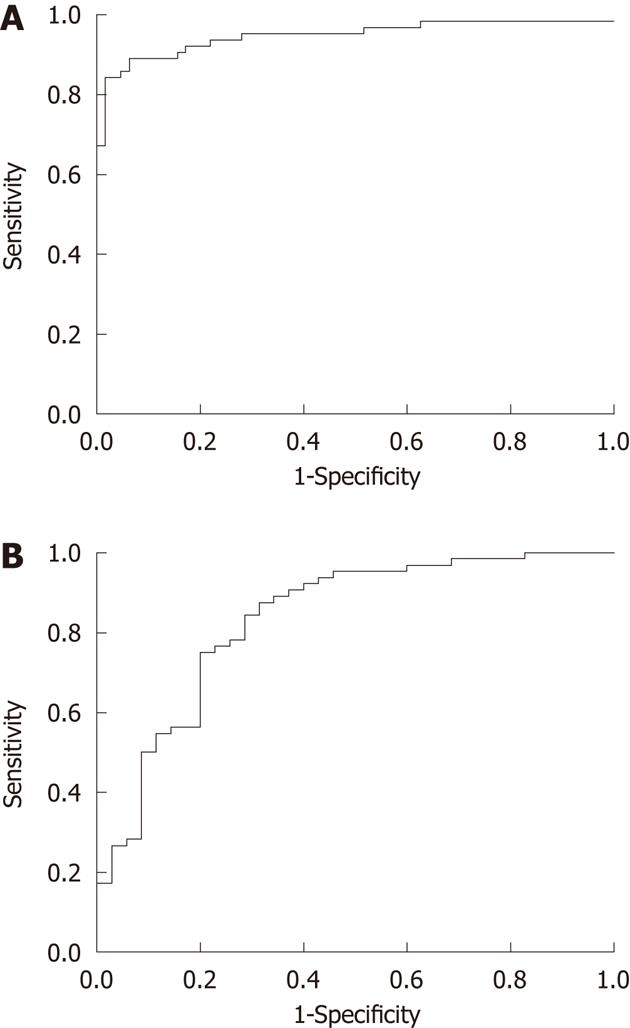Copyright
©2012 Baishideng Publishing Group Co.
World J Radiol. Apr 28, 2012; 4(4): 179-185
Published online Apr 28, 2012. doi: 10.4329/wjr.v4.i4.179
Published online Apr 28, 2012. doi: 10.4329/wjr.v4.i4.179
Figure 1 Oblique sagittal reformatted computed tomography images (A) of a 75-year-old man with squamous cell carcinoma in the lower thoracic portion of the esophagus (black arrows).
The surgical cut edge is determined by a radiologist and a pathologist working in consensus (white arrowhead); and the background normal esophagus (white arrows) has been chosen in the thoracic upper portion. To generate the enhanced attenuation, two regions of interest (B and C) for the esophageal cancer and for the background normal esophagus are drawn freehand around the tumor and around the esophageal wall, respectively; the enhanced attenuation values correspond to 84 HU and 57 HU, respectively.
Figure 2 Receiver operating characteristic curve of difference in contrast enhancement between esophageal squamous cell carcinoma and background normal esophagus.
A: Discriminating the tumor from background normal esophagus (area under ROC curve = 0.948, P < 0.0001); B: Discriminating between the therapeutic change of esophageal squamous carcinoma treated with and without chemoradiotherapy (area under ROC curve = 0.833, P < 0.0001).
- Citation: Li R, Chen TW, Wang LY, Zhou L, Li H, Chen XL, Li CP, Zhang XM, Xiao RH. Quantitative measurement of contrast enhancement of esophageal squamous cell carcinoma on clinical MDCT. World J Radiol 2012; 4(4): 179-185
- URL: https://www.wjgnet.com/1949-8470/full/v4/i4/179.htm
- DOI: https://dx.doi.org/10.4329/wjr.v4.i4.179










